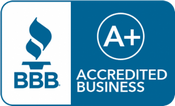 Most business owners know how important it is to categorize fixed assets to accelerate the profitability of their companies, but too many don’t pay attention to tracking and maintaining exactly what’s happened to those fixed assets over the years. Did they break? Did they physically disappear? It happens more than you think: Up to 30% of organizations don’t know what they own, where they are, or who is using them, and 70% of organizations have at least a 30% discrepancy between reported fixed inventory and what’s actually available to them. In other words, they are haunted by something called “ghost assets”.
Most business owners know how important it is to categorize fixed assets to accelerate the profitability of their companies, but too many don’t pay attention to tracking and maintaining exactly what’s happened to those fixed assets over the years. Did they break? Did they physically disappear? It happens more than you think: Up to 30% of organizations don’t know what they own, where they are, or who is using them, and 70% of organizations have at least a 30% discrepancy between reported fixed inventory and what’s actually available to them. In other words, they are haunted by something called “ghost assets”.
Make no mistake: These aren’t the make-believe ghouls you worried about lurking in your closet as a kid. Ghost assets are real and can haunt your business: You’ll overpay on taxes and insurance, and the phantom assets will have unfavorable implications about your company’s efficiency and long-term operations. Think of words like “loss” and “risk” when you think of ghost assets.
What is a ghost asset?
Simply put, a ghost asset is a fixed asset in a general ledger that cannot be accounted for because it’s no longer physically present (it was sold, stolen, lost in a move, etc.) or has otherwise been rendered unusable (damaged or otherwise quit functioning). Most often, ghost assets consist of equipment, property, vehicles, and real estate, but digital products and software are also at risk of becoming ghost assets because they “age out” so quickly and are easily forgotten.
We know, it could never happen to you, right? Wrong. Here’s how easily it can play out:
Say you own a company headquartered in Charlotte and have sales teams working across the Southeast. One morning, one of your salespeople realizes that their laptop is no longer working. They have a company credit card and know the expense will be approved, so they head off to an office supply store to replace the item. They turn in the receipt to your internal accounting team who approves the charge to the company credit card. All is well, and everyone goes on about their day.
Here’s what’s missing: The salesperson in the field never relayed to your main office accounting department that the original tool (asset) is now useless and is likely sitting in his closet for the next who knows how long. The salesperson created no paper trail for the damaged laptop, and by failing to do so, created a ghost asset. The resulting costs could be huge, especially if there were any maintenance program fees on the original item (which there often is in such cases -- anti-virus protections, etc.) that continues to get paid.
What’s the impact?
In the Gartner study linked above, we find that the average company will have anywhere from 15%-30% of ghost assets in their inventory. If you’re in the service industry with little physical assets, sure, this isn’t going to hit you as hard as someone in utilities, transportation, manufacturing, or construction. For those companies, ghost assets can represent a huge chunk of the balance sheet because their assets are so costly. Still, no one wants to lose money, so ghost assets are something every company should worry about.
Overpaying property and income taxes are, perhaps, the biggest threat, but they’re not the only threat. Ghost assets can financially impact insurance premiums, budgeting for future capital expenses, workflow issues, and waste employee resources. They can also impact you legally, as inaccurate financial reporting could put out of compliance with the Sarbanes-Oxley Act, which was passed to counteract the rash of accounting scandals by large companies that occurred in the early 2000s. (Note: ALL companies, regardless of size, must comply with Sarbanes-Oxley.)
3 steps to get rid of the ghosts:
- Face your demons.
If you’re plagued by ghost assets, it’s time to face them by creating a process that will specifically rid them for good. Start with a physical inventory of all large fixed assets to determine what is gone, and then implement an automated process to monitor them going forward.
Automated systems have 3 distinct advantages:
a) They are foolproof. Manual processes are prone to error and tracking problems, not to mention a being very time intensive.
b) Fixed asset financial systems can automatically run depreciation studies to forecast asset lives and remove assets once they have reached the end of life stage. These systems can also integrate with other financial systems to reduce errors across the organization.
c) When tracking tax liability, automated solutions that can act as a data gathering and preparation systems will minimize errors, optimize tax strategies, reduce audit risk and help maintain compliance. - Educate everyone.
Make sure everyone who works for your company, from the field offices to the main offices, understands the importance of properly reporting lost, missing, stolen, or damaged assets. They will be your first line of defense in getting such assets off your records. - Resolve to track fixed assets over the course of their lifetimes.
Companies need to track fixed assets from purchase to retirement within their own accounting departments.
Like the apparitions of your childhood nightmares, ghost assets only live in the dark. They don’t stand a chance in the light. Reduce your associated tax costs, improve projections, and mitigate risk by shining the light on them through more accurate, automated, and complete reporting.






